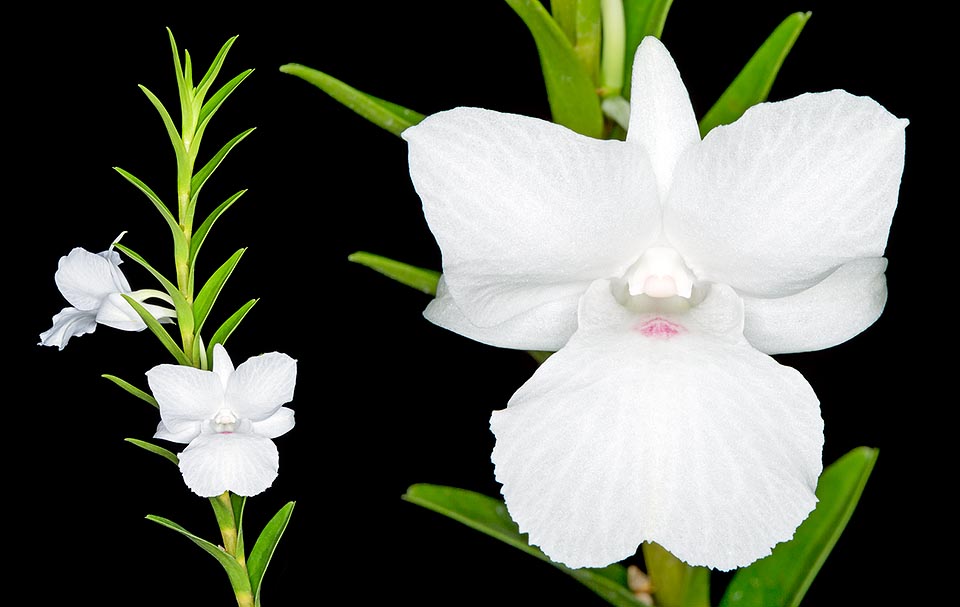Family : Orchidaceae

Text © Pietro Puccio

English translation by Mario Beltramini
The species is native to Borneo (Sabah) and Philippines where it grows in the coastal forests and on the margins of water streams up to about 1000 m of altitude.
The name of the genus is the combination of the Greek substantives “δένδρον” (dendron) = tree and “βίος” (bios) = life, with reference to the numerous species of the genus living on the trees; the specific name comes from the Greek adjective “παρθένιος” (parthénios) = virginal.
Common names: virginal dendrobium (English).
The Dendrobium parthenium Rchb.f. (1885) is an epiphytic plant with erect pseudobulbs, 35-80 cm long, grooved, provided for almost all their length of alternate leaves, distichous, oblong-ovate with bilobed obtuse apex, 4-5 cm long and 1,5-2,5 cm broad, coriaceous, of pale green colour and glossy above, matt below. Inflorescences from the upper nodes with 1-3, rarely 4, flowers, of 5-6,5 cm of diameter, of pure white colour with a purple pink spot at the base of the labellum. Triangular sepals with pointed apex, the lateral two merged at the base of the column to form a sort of a spur (mentum), ovate petals with pointed apex and slightly waved margins, trilobed labellum with small and erect lateral lobes on the sides of the column and spread median lobe, obovate, with retuse apex and frizzy and wavy edges.
It reproduces by seed, in vitro, and division, to be done by the vegetative restart, with each section provided of at least 3-4 pseudobulbs.

The Dendrobium parthenim is a Borneo and Philippines epiphyte with erect 35-80 cm pseudobulbs. Candid 5-6,5 cm flowers lasting 3-6 weeks © Giuseppe Mazza
The species is reported in the appendix II of the CITES (species whose trade is internationally ruled).
Synonyms: Dendrobium sanderianum Rolfe (1894).
→ For general notions about ORCHIDACEAE please click here.
